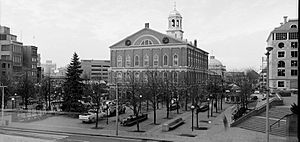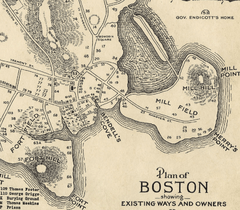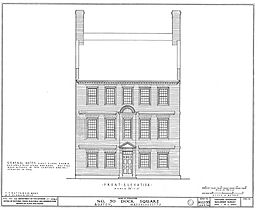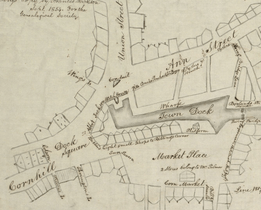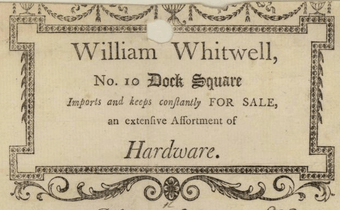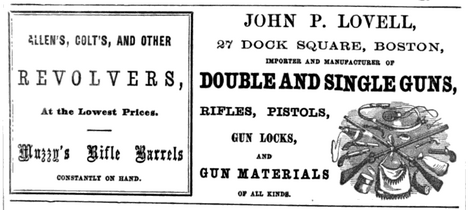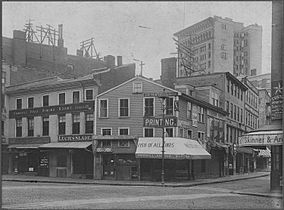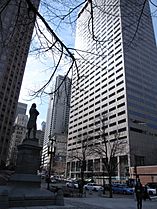Dock Square facts for kids
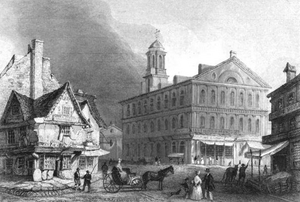
Dock Square is a well-known public space in downtown Boston, Massachusetts. It's right next to Faneuil Hall and is surrounded by Congress Street, North Street, and the steps of the 60 State Street building. The name "Dock Square" comes from its original location right on the waterfront in the 1600s.
For many years, from the 1630s to the early 1800s, this area was known as "the common landing place." Boats would come here to load and unload goods. It was a very busy spot for trade and business in Boston. Even after the waterfront was filled in during the early 1800s, Dock Square remained a lively center for shopping and commerce. In the 1960s, the Government Center was built nearby, which changed the area a lot. Today, Dock Square is a popular spot for tourists, especially since the Freedom Trail runs right through it.
Contents
History of Dock Square
Early Days: 1600s to 1800s
For most of its long history, Dock Square was a busy hub for business in Boston. In the 1600s and 1700s, people would sell their goods, like butter and fish, right out in the open or from small stands.
In 1733, a public market building opened in the square. This caused some arguments because not everyone liked the new rules. A few years later, in 1737, a group of people even tore down the market house!
Then, in 1742, Faneuil Hall opened nearby. Even with this new building, many vendors still preferred to sell their items outside in Dock Square. Town records show that people often complained about how crowded Dock Square was with carts and market stalls. It was even made illegal for vendors to set up their stands in the square by 1764. People were encouraged to buy from inside the market instead.
Dock Square was also home to many different kinds of shops. In 1723, you could find stores selling things like tea and Cheshire cheese that had just arrived from London. By 1789, there was an inn, a dry-goods store, and a grocery store. In the early 1800s, a man named Samuel Eliot ran what might be called an early department store in Dock Square, selling everything from baby items to gravestones! Other shops included snuff shops, hardware stores, and even a feather store.
Modern Times: 1900s to Today
By the mid-1900s, Dock Square and the areas around it became much busier with car traffic and taller buildings. A major highway, Interstate 93, was built nearby.
In the 1960s, some of the smaller streets and walking paths around Dock Square were removed. This was done to make space for the construction of the large, modern Boston City Hall and other buildings that are part of the Government Center complex. These changes made Dock Square feel less like a busy town center and more like a place people just passed through.
Today, Dock Square is still an important part of Boston. It's a key stop on the Freedom Trail, which is a walking tour of historic sites. Many tourists visit the square to see Faneuil Hall and learn about Boston's past.
Images for kids
-
Dock Square and Congress Street in 2010, showing Anne Whitney's statue of Samuel Adams.


